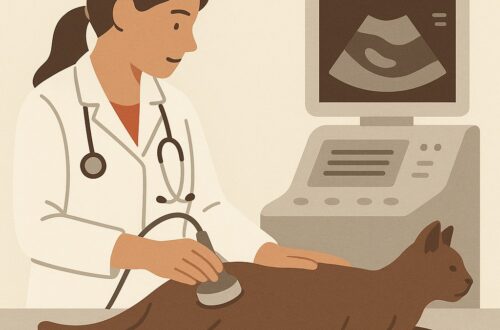With the warmer weather months upon us here in the Northern Hemisphere, so too are environmental allergens. Those pesky particles blowing around in the wind wreak havoc on many of us because they irritate our upper airways. Naturally our bodies try to expel them through various routes – sneezing, tearing, nasal discharge, etc. Dogs and cats also experience reverse sneezing. As such a phenomenon is uncommon in people, reverse sneezing often startles and worries pet parents. So, this week I’ve dedicated some time to clearing the air about it. Happy reading!
Reverse Sneezing – What is it?
To understand this condition, one needs to have a little knowledge about the anatomy of the upper airway. The upper airway has many components:
- Nose | nostrils | nares
- Nasal cavity
- Mouth | oral cavity
- Throat | pharynx (pronounced fare-inks)
- Voice box | larynx (pronounce lare-inks)

The simplest way to think about reverse sneezing is that the body is trying to get rid of airway irritants from the mouth and throat – the so-called oropharynx. It’s the equivalent of sneezing as way to expel irritants from the nasal cavity. What are these irritants? They most commonly are foreign objects (e.g.: grass awns or blades of grass), nasal mites (Pneumonyssus caninum), environmental allergens, masses. Occasionally, animals with lower airway diseases produce secretions that are coughed up and subsequently irritate the oropharynx. The abnormal air flow caused by brachycephalic airway syndrome can also trigger reverse sneezing in affected pets.

Reverse Sneezing – What does it look like?
Any dog or cat can experience reverse sneezing. There is no age or gender predisposition. Reverse sneezing manifests as abrupt fits – called paroxysms – of strong & repeated efforts to breathe in when the entrance to the lower airway (called the glottis) is closed. When this occurs, pets may extend their necks and may appear to smile because their lips are drawn back. Invariably they make weird snorting noises. Pet parents are worry their pet is choking, but rest assured no such thing is happening. Below are some videos depicting the abnormal upper airway noise.
Reverse Sneezing – How is it treated?
No specific therapeutic interventions are needed for most affected dogs and cats. Typical reverse sneezing episodes are very intermittent and brief in duration. Patients are normal afterwards. Pet parents should explore reverse sneezing with their family veterinarian if episodes become frequent and/or if other signs of upper airway disease are present. Pet parents may be referred to a board-certified veterinary internal medicine specialist if advanced diagnostics like computed tomography (CT scan) and rhinoscopy are indicated.
The take-away message about reverse sneezing in dogs…
Reverse sneezing is an upper airway behavior that attempts to clear the oropharynx of various irritants. No specific treatment is generally needed because episodes are brief and infrequent. Diagnostic testing and treatments may be indicated if reverse sneezing becomes chronic and if other signs of upper airway disease are present.
To find a board-certified veterinary internal medicine specialist, please visit the American College of Veterinary Internal Medicine.
To find a board-certified veterinary emergency and critical care specialist, please visit the American College of Veterinary Emergency and Critical Care.
Wishing you wet-nosed kisses,
cgb





